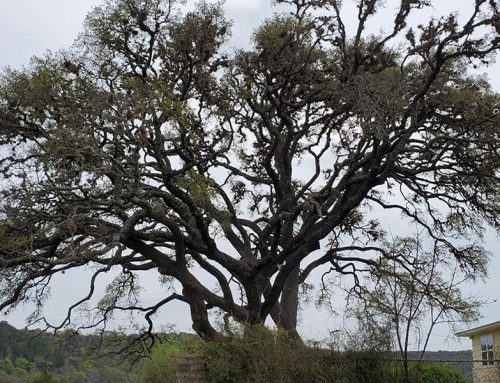If you have trees on your property with falling tree branches or growing awkwardly, you may have asked yourself, “How much does it cost to cable a tree?”
Tree cabling supports trees to ensure they do not fall on passing human traffic or nearby properties.
An ISA-Certified Arborist from a Texas top-rated tree branch support systems provider can help you with all aspects of this tree maintenance technique, advising you on all aspects of cabling a tree, including the supplies needed and the costs involved.
What Is Tree Cabling?
Tree cabling, also known as tree bracing, is a tree care technique that corrects the asymmetric or awkward growth of otherwise healthy trees.
This maintenance service uses cables that wrap around a tree, offering solid support that enables a tree to grow normally. ISA-Certified Arborists use professional equipment and cabling systems to drill holes into affected tree branches and insert cables to support the tree.
Arborists place cables at the end of a branch and approximately at the two-thirds point of weakness. They then utilize a stop system to anchor the cable at these branch locations.
It is important to note that cabling is not a method of dealing with unhealthy or dying trees, which you must either fell or stump grind. Instead, tree bracing corrects long-term issues like weak branches or inefficient growth on healthy trees for safety and aesthetic reasons.
How Much Does It Cost to Cable a Tree?
So, how much does it cost to cable a tree?
On average, tree bracing costs between $200 and $600. A small tree costs around $170 to cable, a medium tree approximately $400, and a large tree between $500 and $600.
The costs of tree cabling also take into account the supplies, which include:
- Arborist’s equipment, e.g., helmets, gloves, ropes, pulleys, harnesses, and levers
- Tree cables
- Tree cabling stop system
- Cordless drill
Other factors that could contribute to the cost of your tree cabling project include:
- The number of branches that need tree cabling
- The size of the tree
- The number of tree care professionals needed on the job
- The total supplies needed to perform the service
What Are the Advantages of Tree Cabling?
There are many advantages to cabling a tree. Some of the most common include:
Tree Cabling Ensures the Safety of the Surrounding Areas
Perhaps the most important reason for tree cabling is safety. If you have awkwardly growing branches on a tree, the likelihood of these branches falling on people or property increases.
An appropriately cabled tree is secure because these branches will be trained to grow correctly, reducing their chances of falling and hurting someone or damaging nearby structures.
Tree Cabling Keeps a Tree Healthy and Stable
Tree cabling also improves the stability of the tree. This service seals any points where destructive growths or microbes can enter, ensuring the continued health of the tree.
Tree Cabling Enhances the Look of Your Tree
Tree bracing contributes to the overall look of your tree, enhancing its curb appeal by getting rid of lopsided branches and adding to its symmetry.
Get Help from a Professional Texas Tree Cabling Service Today
Trees cabling is a necessary tree care service that ensures trees look good and grow healthy. It is by no means a DIY task and requires the services of an ISA-certified Arborist.
If you are constantly online searching “how much does it cost to cable a tree” and want to learn about the best ways to stake a tree, contact the ISA-Certified Arborists of Rockoff Tree Solutions for a free inspection and assessment.
Call 830-955-0304 or contact us online to obtain your free written, no-obligation estimate.



